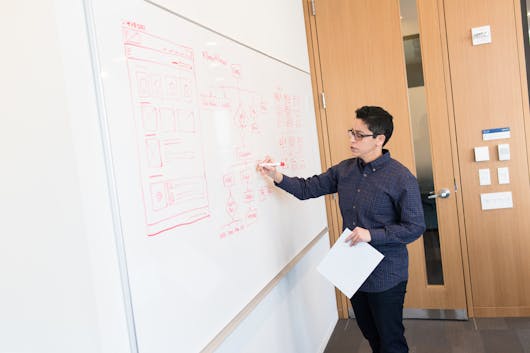introduction
This will institute a business continuity plan to ensure the continued performance of critical business functions during and after any eventuality of disaster or disruption. For a business hugely dependent upon its presence online—more so if it’s using WordPress—a BCP would be more than necessary. A WordPress site faces the company and has to be up and running all the time. This will ensure, in case of any unexpected outage, cyber attack, or any other downtime, the WordPress site bounces back into action without much delay for servicing the end-users. The introduction underscores the real need for integrity and uptime concerning the WordPress site and shielding the business from loss and harm to its reputation.
Why a Business Continuity Plan is Important for a WordPress Site

A Business Continuity Plan assures a WordPress site that it can be resilient and have the ability to recover very fast in case there is a disruption from cyber attacks to server failures, natural disasters, or any other cause for downtime, which can be very dangerous, like loss of revenue, damaging the brand name, and leading to a loss of customer trust. In particular, WordPress sites should be continuously available and secure if they present the main digital presence of any business. The risk is reduced by implementing a BCP that describes countermeasures for backing up data, securing the site, and minimizing downtime. Such a proactive approach reduces unwanted downtime and ensures business continuity, keeping the site running smoothly for continuous business operations and customer engagement in the face of unforeseen challenges.
Benefits: A Business Continuity Plan is Important for a WordPress Site

Implementing a Business Continuity Plan means that your WordPress site will be running in every condition, even in the event of a disruption. Such a well-written BCP reduces the downtimes to near zero, protecting the integrity of the data and enhancing security measures for a quick recovery from incidents like cyberattacks or server failures. On the other hand, a BCP prevents loss of money by protecting a site and builds trust with customers by being reliable. It also complies with regulatory requirements while helping in the survival of the business for long periods by adjusting to new threats as they continuously appear. This ensures that your business can maintain a competitive advantage, while this proactive measure helps protect your business from unexpected challenges, thus ensuring that the WordPress site remains up and operational to keep customer engagement and business operations smooth.
How to Apply a Business Continuity Plan to a WordPress Site
Applying a Business Continuity Plan to a WordPress site will involve a number of stages to make sure that your website keeps running or bounces back fast in the case of disruption. Here is how you can do this:
1. Risk Assessment
Determine all kinds of potential risks that might disrupt your WordPress site. Examples are cyber attacks, server failures, and plugin vulnerabilities. Knowing these risks will help in designing mitigation strategies.
2. Designing a Backup Strategy
This will be a good opportunity to implement a strong, self-managing WordPress site backup solution. The backups should capture all critical parts of the site, including the database, themes, plugins, and media files. Backups should also be kept in different places—including cloud storage and external drives—to let one get back the data in case one of these places is compromised.
3. Improved security features put in place
Establish robust passwords; two-factor authentication if your password does get compromised; famous security plugins keep your website safe. One should keep updating WordPress, themes, and plugins from time to time because in the updates, there may be the ability to fix vulnerabilities. Consider using a web application firewall for an additional layer of protection.
4. Set up redundancy and failover systems
Provide redundancy and failover systems so that in case of any issues cropping up, they can take the place of your WordPress site. This can be done through a content delivery network and using many different servers to distribute your content or by setting up another server that would be able to take over if another one fails.
5. Disaster Recovery Plan
Have a clear disaster recovery plan detailing steps that will be followed in getting your WordPress site up in case it goes down. It needs to stipulate, among other things, how to access backups, who is responsible for recovery tasks, and the timeline for having the site up.
6. Test the plan regularly and update it.
Test your BCP regularly to see how well it functions. Run through mock disaster recoveries where you’re really timing the duration it takes to recover your site. Be sure to update the plan regularly for any new risks or structural changes that may have taken place within your WordPress site.
7. Continuous Monitoring
Always be on the lookout for the performance of your WordPress site. Trends of issues may very well develop into huge disasters if timely action is not taken. Set up configured alerts for your case of downtime, unusual traffic patterns, or security breaches so you to act fast.
8. Train Your Team
Let your staff be knowledgeable about the BCP and what everyone’s job is if disaster strikes. In that way, periodic training will have them all prepared and current to act at any time.
9. Develop a Communication Plan
Design a communication strategy that will allow stakeholders—including customers, collaborators, and workers—to know in case of a disaster. Keeping them abreast of progress at the site and the recovery process of information will show transparency and enhance trust.
10. Review and Refine
Once in a while, run through your BCP to make sure that any changes or updates in your WordPress site affect it. The idea is this: just like your WordPress site will go through different stages of development, so should your BCP if it’s going to continue being useful to you.
The following steps will show you exactly how to implement this Business Continuity Plan on your WordPress site to help it keep running and remain safe throughout the most difficult of unexpected challenges.
Conclusion
Thus, a Business Continuity Plan is the most important measure for a WordPress website to be resistant, safe, and continuously functional. Reductions in the periods of unavailability of the site and prevention of remarkable financial and reputational losses that may arise from your business will be ensured by proactive preparation against risks, the creation of strong backup and safety measures, and recovery processes. This becomes even more so because of frequent testing and updating of the BCP so that your site is able to evolve against new challenges and threats. As a matter of fact, a well-implemented BCP not only helps protect your WordPress site but also builds customer trust and helps in the long-term sustenance of your business in this fast-digitizing world.


2 Comments
Pingback: Should a business continuity plan be applied to a WordPress site
Pingback: Should a business continuity plan be applied to a WordPress site